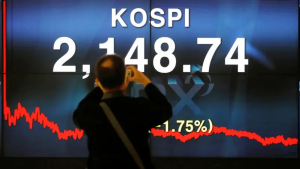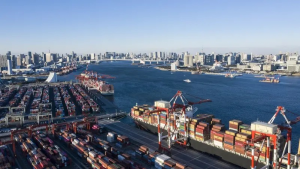Saudi Arabia faces the risk of an economic contraction this year following its decision to extend crude production cuts, highlighting its still heavy reliance on oil as reforms to diversify are slow moving.
Riyadh says it aims to stabilise the oil market by extending a voluntary oil output cut of 1 million barrels per day until the end of 2023. Its announcement on Tuesday sent oil prices above $90 for the first time this year, but they are below average prices of around $100 a barrel last year in the wake of Russia's invasion of Ukraine.
Declining oil production and revenue this year could see Saudi Arabia's economy shrink for the first time since 2020 at the height of the COVID-19 pandemic, although a hefty dividend from state oil producer Saudi Aramco (2222.SE) should provide a cushion for public finances.
Cutting oil output for another three months, on top of production cuts earlier in the year, translates into a 9% fall in production in 2023 - the biggest production drop in nearly 15 years for OPEC's de facto leader - said analyst Justin Alexander at Khalij Economics.
Monica Malik, chief economist at Abu Dhabi Commercial Bank, now sees Saudi gross domestic product (GDP) contracting 0.5% this year, revising her forecast from last month of 0.2% growth this year, while Alexander said non-oil growth would need to average about 5% this year to maintain growth.
"This was actually precisely the growth rate in H1, but leading indicators such as the PMI (purchasing managers' index) have pointed to a modest slowdown, so that might be hard to sustain in H2. As a result a small real GDP contraction is looking likely," Alexander, also Gulf analyst at GlobalSource Partners, said.
Last year the Saudi economy grew 8.7% and generated a fiscal surplus of 2.5% of GDP, its first surplus in nine years as oil soared to highs near $124. This year the government has forecast a surplus of 0.4% of GDP, but some economists say even that may be optimistic.
Saudi Aramco, 90% government owned and awash with cash after last year's boom, said last month it would fork out a near $10 billion dividend to shareholders in the third quarter from its free cash flow - the first of several extra payouts on top of its expected more than $150 billion base dividend for 2022 and 2023 combined.
"Even so, we think that the government will run a budget deficit of 1.5% of GDP this year – well below the Budget estimate for a 0.4% of GDP surplus," James Swanston of Capital Economics said in a note.
The Saudi finance ministry did not immediately respond to a request for comment.
The kingdom's deficit stood at 8.2 billion riyals ($2.19 billion) for the first half of this year.
An official from the International Monetary Fund, which had forecast a 1.2% of GDP deficit this year, said on Thursday the budget would be closer to balance as a result of the extra Aramco payout and, unlike a growing number of economists, the IMF also believes the economy will manage slight growth this year.











